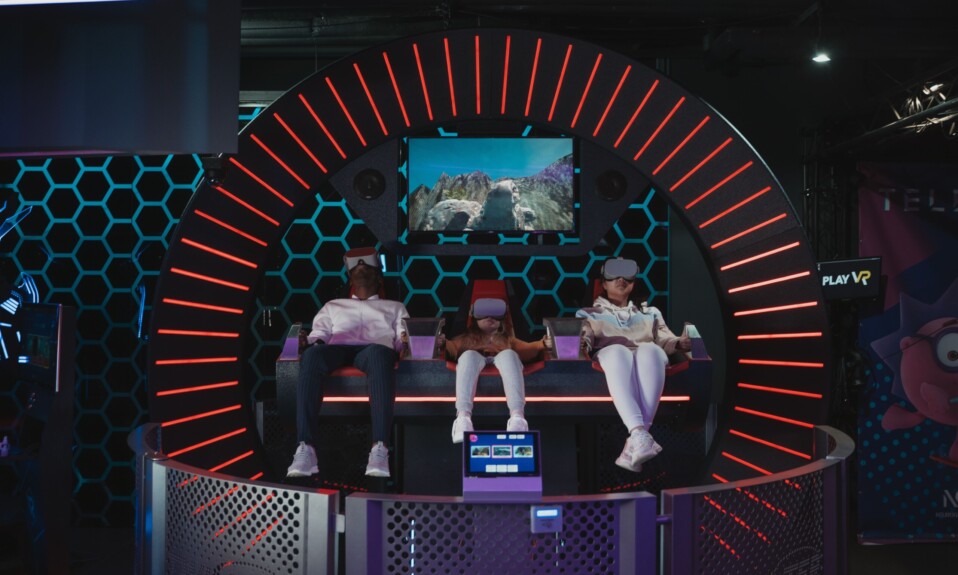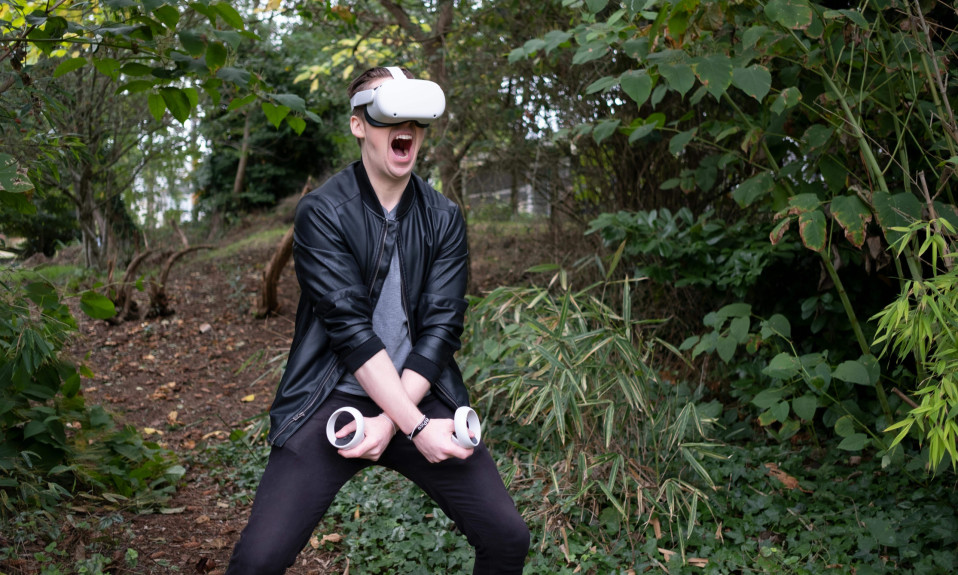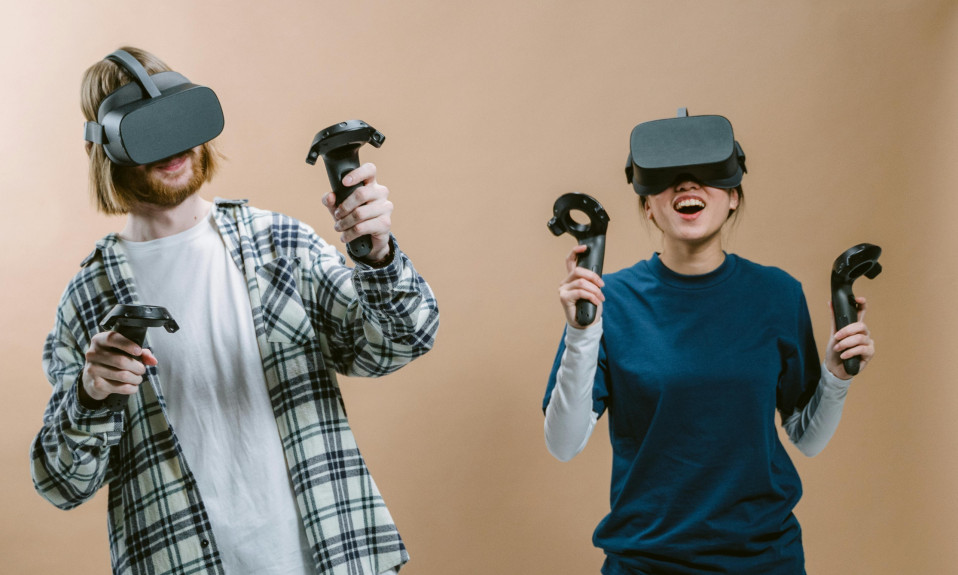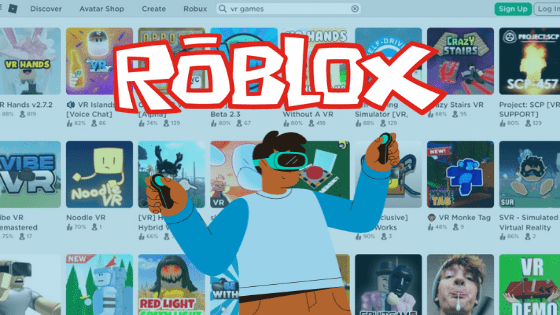Augmented reality (AR) is an interactive experience that enhances the real world with computer-generated information or virtual simulations.
With GPS-enabled mobile devices, vehicle parking assistant systems, or animated Snapchat lenses, AR has become more integrated into our daily lives than we ever imagined.
From its roots in the military and aviation industry, augmented reality has evolved into a revolutionary technology for various commercial sectors like gaming, e-commerce, and education.
“Augmented Reality” was coined in the early 1990s by former Boeing researcher Thomas Preston Caudell.
Caudell’s work involved developing a digital display system that helped assembly line workers visualize important information superimposed directly onto physical objects during manufacturing.
This remarkable feat demonstrates the potential of AR in streamlining industrial processes and workflows.
Augmented reality and other core technologies like virtual reality, Web 3.0, and the Blockchain are foundational for building fully immersive digital experiences in the metaverse.
This article delves into augmented reality, understanding how it works, and exploring the various types of AR experiences and their real-world applications.
Without further ado, let’s get started.
I do not want a discount, said no one ever! Upgrade your VR setup today with top-tier accessories—use code META20 for 20% off + free shipping on orders over $15. Level up your VR experience now ➡️ Shop & Save!
Quick Navigation
What is Augmented Reality?
Augmented reality (AR) is an immersive experience that enhances a user’s perception of their physical environment by adding visual layers of digital information.
AR experiences take different forms, but their core purpose remains the same, bridging the gap between the digital and real worlds.
To achieve this, digital information such as text, sounds, images, 3D models, or videos merge with one’s surroundings, often overlaid on physical objects or viewed through dedicated devices.
AR experiences occur as a result of direct or indirect user interaction, but the level of immersion created varies depending on the technology utilized and individual perception.
How Does Augmented Reality (AR) Work?
According to a 2019 study on virtual reality technology, three core technologies play significant roles in developing augmented reality experiences.
For a detailed explanation of how augmented reality works, we will explore these core technologies, which include intelligent display technology, 3D registration technology, and intelligent interaction technology.
Intelligent Display Technology:
This technology involves developing cutting-edge electronic displays, integrating new features, faster processors, and more functionality into existing display devices to enhance augmented reality experiences.
Intelligent display devices offer a range of options, including head-mounted displays (HMDs) like smart glasses, AR headsets, and goggles.
Other options include devices such as smart mobile phones and stationary displays like PC desktop monitors.
AR head-mounted display devices often utilize optical see-through technology to superimpose digital information and enhance users’ perception of the real world.
Examples of such head-mounted devices include Google smart glasses, Microsoft Hololens, and the Apple Vision Pro headset, blending the digital and physical worlds seamlessly.
3D Registration Technology:
3D registration technology incorporates inputs from various sensors, trackers, and specialized cameras built into intelligent display devices to accurately measure and estimate the dimension and orientation of a user’s physical environment.
After obtaining the necessary inputs, virtual models or digital information gets projected or superimposed onto the real world more accurately.
This technology can influence users’ perceptions, feelings of immersion, and how effectively they interact with experiences in augmented reality.
Further research suggests that 3D registration technology branches into sensor-based, vision-based, and hybrid registration technology.
Intelligent Interaction Technology:
As the name suggests, Intelligent interaction technology enables users to directly interact with digital information and virtual objects within augmented reality.
The level of interaction between the users and digital information can rely on the specifics and quality of hardware in select display devices.
Other types of AR interactions exist as location-based, tag-based, markerless interactions, and so on.
While several factors contribute to rendering digital information in AR, these core technologies play crucial roles in creating seamless experiences in augmented reality.
I do not want a discount, said no one ever! Upgrade your VR setup today with top-tier accessories—use code META20 for 20% off + free shipping on orders over $15. Level up your VR experience now ➡️ Shop & Save!
What Are the Different Types of Augmented Reality Technology?
Augmented reality (AR) offers diverse experiences with varying levels and degrees of user interaction and immersion.
Marker-based AR and marker-less AR technology are two main types of AR experiences.
However, this section explores the main categories and their subcategories to provide a better understanding of the range of AR experiences.
Marker-Based Augmented Reality
Marker-based AR technology is a form of augmented reality that uses physical markers such as visual patterns, codes, or images as portals to access several experiences or digital information.
This technology is employed during object or image recognition to obtain visual inputs using cameras on intelligent display devices.
After processing these markers, digital information or interactive experiences augment users’ perception of the real world.
Examples of marker-based augmented reality include barcodes, patterns, logos, and QR codes.
Marker-less Augmented Reality
Marker-less augmented reality technology utilizes other techniques to superimpose digital information, enhancing users’ perception of their physical environment without relying on physical markers.
This type of AR technology incorporates inertia tracking technology with devices like accelerometers, gyroscopes, visual input devices such as cameras, and GPS location services.
It may also integrate simultaneous localization and mapping (SLAM) technology, which employs radars and sensors.
This combination of trackers, sensors, and supporting technologies enables markerless AR technology to obtain accurate information (directional position and orientation) of objects in the real world.
These inputs establish relationships between physical and virtual objects before digital information and interactive experiences are rendered or superimposed onto the real world.
Projection-Based Augmented Reality
Projection-based augmented reality utilizes dedicated devices to deliver and superimpose digital information onto a flat, 2D surface.
This form of augmented reality offers some degree of immersion, as the artificial light from projected devices responds to user contact.
Projection-based augmented reality devices require greater processing power than other forms of AR due to the utilization of special techniques.
These techniques employ gesture and camera-based recognition for seamless user interaction.
Some applications of projection-based AR include interactive museums, art exhibits, holograms, and dynamic sculptures.
Location-based Augmented Reality
Location-based augmented reality utilizes GPS services within intelligent display devices to render location-specific digital information or interactive augmented reality experiences to users.
The launch of the HTC Dream, the first Android-based handset in 2008, was a significant milestone for AR researchers, as all the components necessary for location-based AR finally came together in a single handheld mobile device.
Examples of location-based augmented reality experiences include Pokémon GO, Snapchat’s snap map, and tagged-based location features on Facebook, Instagram, and YouTube.
Other forms of augmented reality include overlay-based AR, superimposition AR, and contour-based AR.
I do not want a discount, said no one ever! Upgrade your VR setup today with top-tier accessories—use code META20 for 20% off + free shipping on orders over $15. Level up your VR experience now ➡️ Shop & Save!
Advantages and Applications of Augmented Reality in the Real World
The application of augmented reality extends across several sectors, including healthcare, gaming, entertainment, fashion, e-commerce, the military, aviation, arts, music, and education.
While many envision these applications as futuristic possibilities, several industries are already actively using AR in more practical ways.
This section dives into two prominent sectors, highlighting real-world examples and applications of augmented reality experiences.
Applications of Augmented Reality in E-commerce and Online Shopping
Several well-known brands utilize augmented reality technology to help prospects visualize physical products in real time and improve the customer journey.
Augmented reality technology has become a tool that bridges the gap between online shopping and in-store physical shopping experiences.
Online furniture retailer IKEA launched a virtual showroom, enabling customers to superimpose interactive 3D furniture models onto their homes using their mobile devices.
Shopify, an e-commerce platform for business owners, launched “E-commerce AR” as part of its merchant subscription plan, enabling brands and retailers to create interactive augmented reality product showcases and experiences for potential customers.
Online shopping augmented reality experiences rely on markerless AR and intelligent handheld display devices to obtain information about users’ physical environment and accurately render digital information and interactive AR experiences.
Applications of Augmented Reality in the Educational Sector
Augmented reality can potentially enhance the educational sector through interactive learning experiences for students across various fields of study and institutions.
Intelligent display devices project digital content or virtual simulation into the real world, leveraging various forms of AR.
These interactive AR learning experiences can ease cognitive load, offer individualized learning, and boost student motivation and interest.
A 2019 review of existing studies on the impact of augmented reality in learning experiences for elementary school students identified two main advantages of AR for learning.
These advantages include motivating students to engage in interactive learning experiences and improving their learning performance.
However, the study also identified some potential downsides and concerns, such as difficulty navigating the intricacies of display devices and addiction due to excessive usage.
Final Thoughts on Augmented Reality
Augmented reality and its AR-related technology have played crucial roles in enhancing digital experiences in the real world.
Smart devices built with AR-compatible hardware enable augmented reality experiences such as interactive navigational systems and Snapchat lenses to record and capture digitally enhanced media, games, shopping experiences, and much more.
It’s no surprise that nearly 1.1 billion people actively use mobile augmented reality devices, and its reach may grow to 1.73 billion users by the end of 2024.
With the potential of AR in a vast number of sectors and industries, we’re optimistic about what lies ahead.













